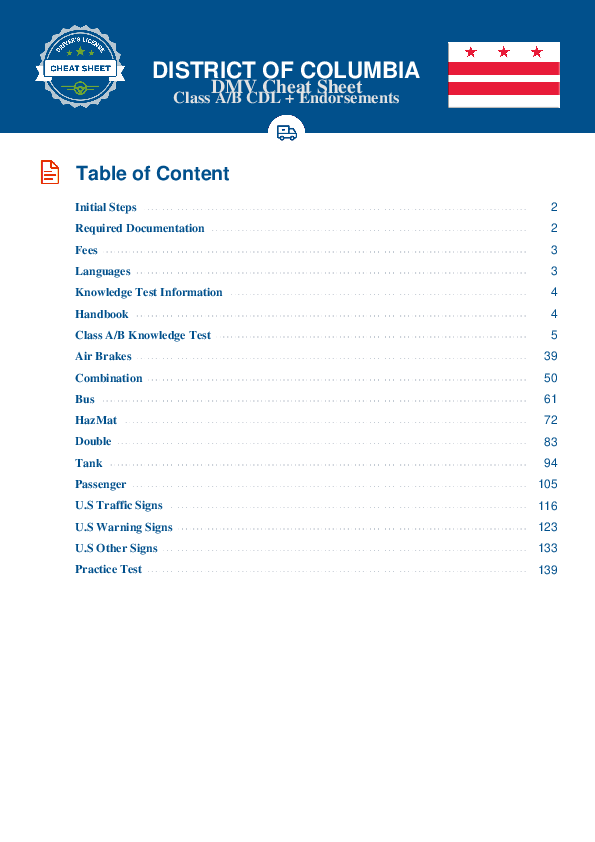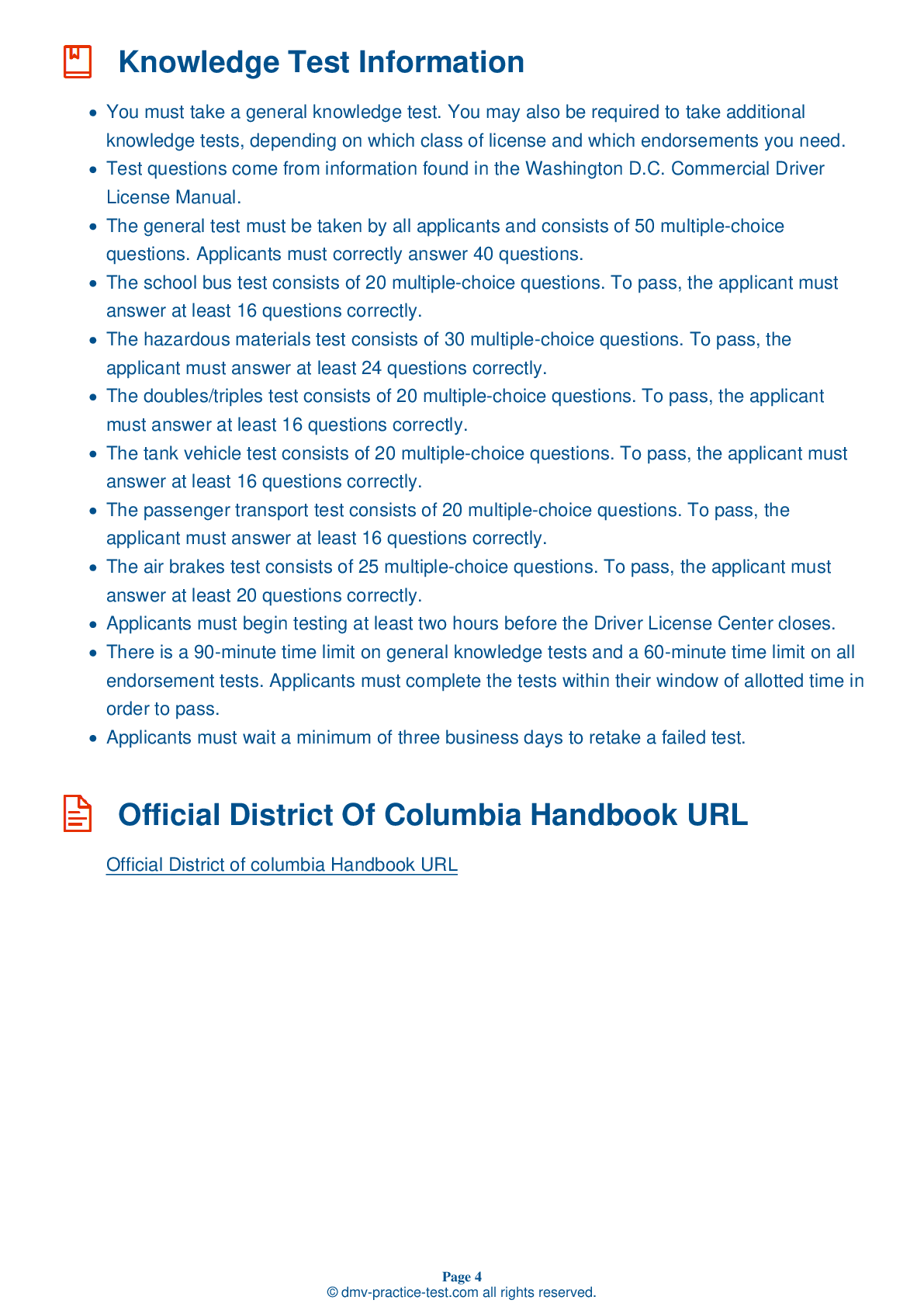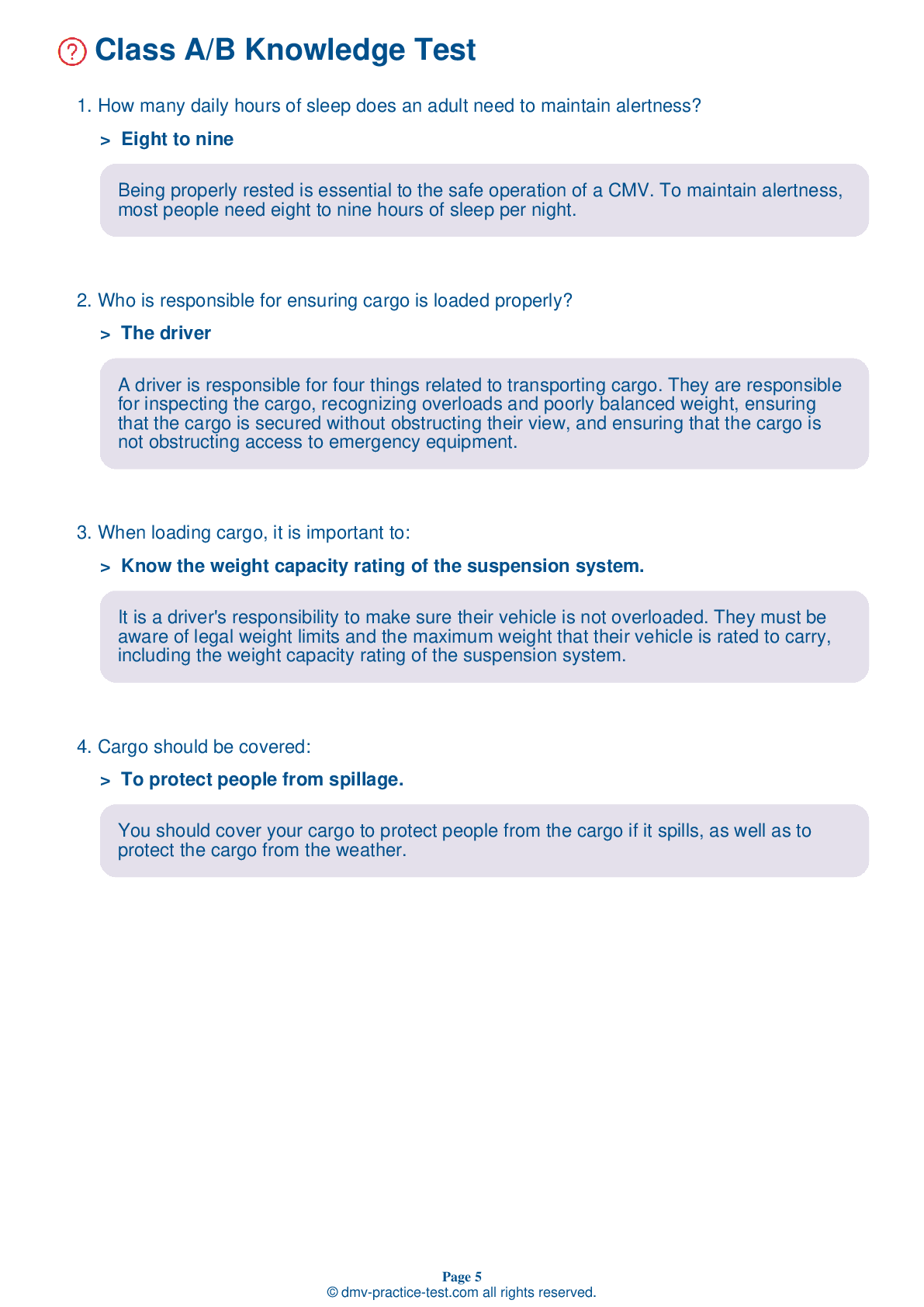Combination #2
Combination Vehicles Practice Test | District Of Columbia 2025 #2
Train for FREE online with our District Of Columbia CDL combination vehicle test. The official exam test consists of several obligatory parts, with all of them checking your knowledge of different blocks of road rules. If you need to obtain a DC combination license in 2025, practice as much as possible. Free sample tests published on our website will help you check and improve your knowledge and boost your grades. Please bear in mind that DMV requirements for issuing a combination license may vary from state to state.
20
16
20
1 . When lightly loaded, combination vehicles:
Should be loaded with most of the weight in the rear of the trailer.
When a combination vehicle is lightly loaded, it may have poor traction. It is very easy for wheels to lock up on lightly-loaded vehicles when they are being stopped.
2 . Compared to other commercial motor vehicles, combination vehicles need more space on the road because they are longer and they:
Swerve more often.
Combination vehicles need more space on the road than other commercial vehicles because they are longer and need more space to turn and stop. It is especially important to properly manage space when you are operating a combination vehicle.
3 . To prevent a rollover, a driver should:
Turn quickly.
Rollovers can happen when a combination vehicle is turned too quickly. To help prevent the risk of rollover, it is important to keep the vehicle's center of gravity low by loading cargo as close to the ground as possible.
4 . When driving a trailer with ABS, you should:
Try to not brakes as often as you would when driving a vehicle without ABS.
When driving a tractor-trailer combination equipped with an Anti-Lock Braking System (ABS), you should brake in the same manner that you would if operating a vehicle without ABS.
5 . If colors are being used to distinguish glad hands, which color is used for service lines?
Blue
When trailer air lines are color-coded, the service lines are generally blue and the emergency lines are generally red.
6 . To help prevent rollovers, you should:
Keep the load on one side of the trailer.
To lower the risk of a rollover, load your cargo as closely to the ground as possible. To further reduce this risk, take curves and corners slowly.
7 . If a trailer's spring brakes do not release when you push the tractor air supply control, you should:
Drive normally without checking anything.
It is important that all of your vehicle's equipment is in proper working condition before you begin a trip. If a trailer's spring brakes do not release when you push in the tractor air supply control, you should make sure the air line connections are properly attached and sealed.
2025 District Of Columbia | Frequently Asked Questions
To acquire a CDL Hazmat endorsement in the District of Columbia, you must first hold a valid CDL. Then, pass the Hazardous Materials Knowledge Test at a DMV service location. You'll also need to undergo a federal TSA background check and fingerprinting. Lastly, submit the Hazmat Endorsement Application, proof of U.S. citizenship or legal status, and pay the required fees.
To obtain a CDL Hazmat license, you must already hold a valid Commercial Driver's License (CDL). You also need to pass the Hazardous Materials Knowledge Test, undergo a federal TSA background check, and be fingerprinted. Proof of U.S. citizenship or legal status is required. Lastly, you need to be in good physical health to meet the demands of the job.
When applying for a CDL Hazmat endorsement, you'll need to provide your valid Commercial Driver's License (CDL), proof of U.S. citizenship or legal residency (like a passport or birth certificate), and proof of identity. You'll also need to bring the receipt for your TSA background check and fingerprinting, and complete the Hazmat Endowment Application.
Yes, there is a dedicated written test for the CDL Hazmat endorsement. This test focuses on the rules and safety procedures for handling and transporting hazardous materials. It's essential to study the Hazmat section of your state's CDL manual thoroughly before taking the test to ensure you're well-prepared.
The written test for the CDL Hazmat endorsement covers a range of topics related to hazardous materials. These include identifying hazardous materials, understanding shipping papers, using placards and labels, handling emergencies, loading and unloading procedures, and complying with the relevant safety rules and regulations.
Yes, there are extra charges associated with acquiring a CDL Hazmat endorsement. These include fees for the TSA background check and fingerprinting, which typically cost around $86.50. Additionally, there may be a fee for the endorsement application, which varies by state. It's best to check with your local DMV for specific costs.
Yes, obtaining a CDL Hazmat endorsement requires a mandatory background check and fingerprinting conducted by the Transportation Security Administration (TSA). This ensures the individual doesn't pose a security threat and is part of the federal safety regulations for handling hazardous materials.
Yes, specialized training is mandatory for the CDL Hazmat endorsement. Applicants must pass a written test that covers the regulations and requirements for transporting hazardous materials. After passing the test, they receive a certification, which is the Hazmat endorsement on their Commercial Driver's License (CDL). This ensures they are knowledgeable about handling hazardous materials safely.
No, you cannot legally transport hazardous materials without a valid CDL Hazmat endorsement. This endorsement ensures that you have the necessary knowledge and skills to handle hazardous materials safely. Driving without it can result in serious penalties, including fines and suspension of your commercial driver's license.
Yes, you can add a Hazmat endorsement to your existing CDL. You don't need to apply for a new CDL. However, you must pass a written Hazmat knowledge test, submit to a TSA background check, and pay the associated fees. Once these steps are completed successfully, the Hazmat endorsement will be added to your CDL.



